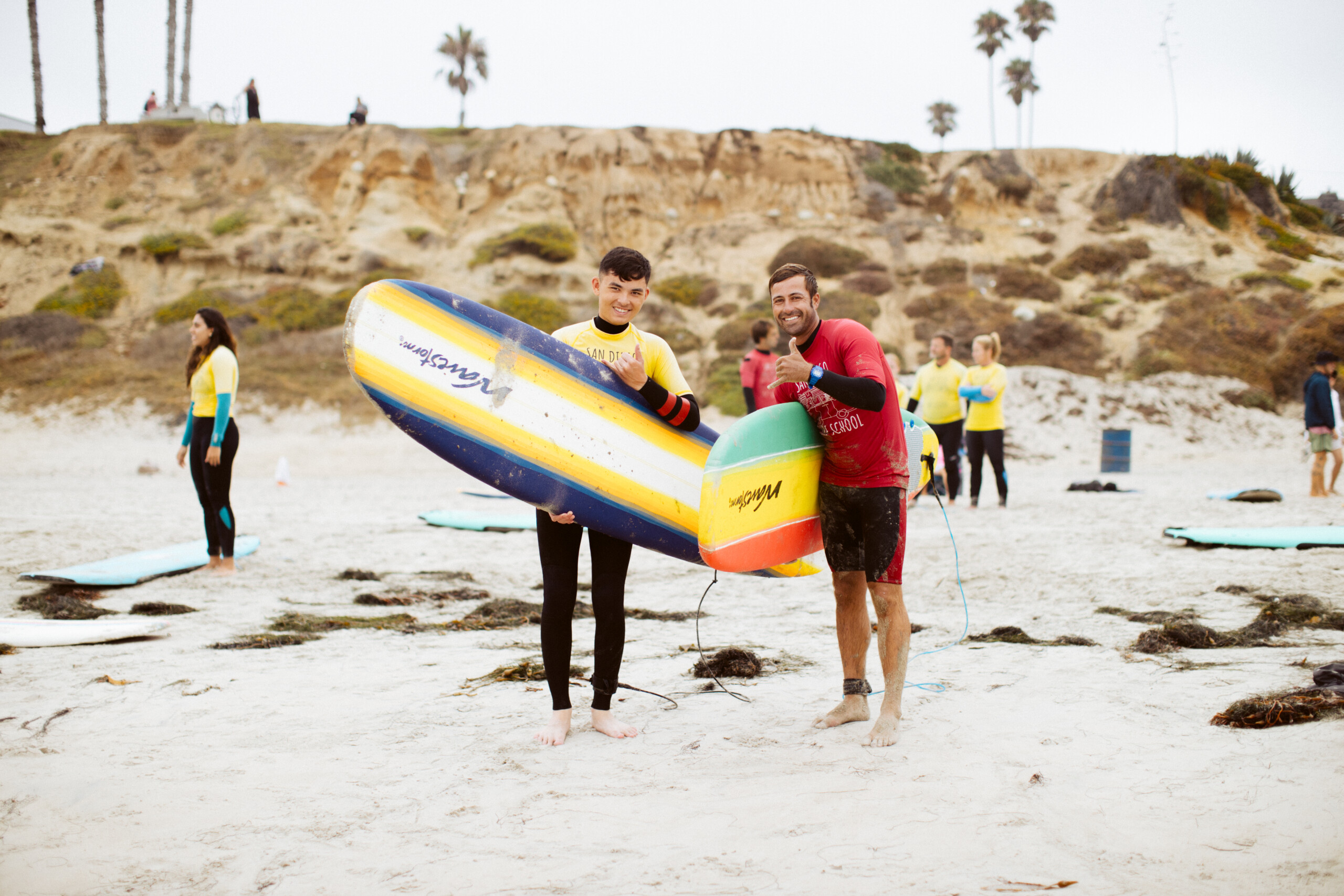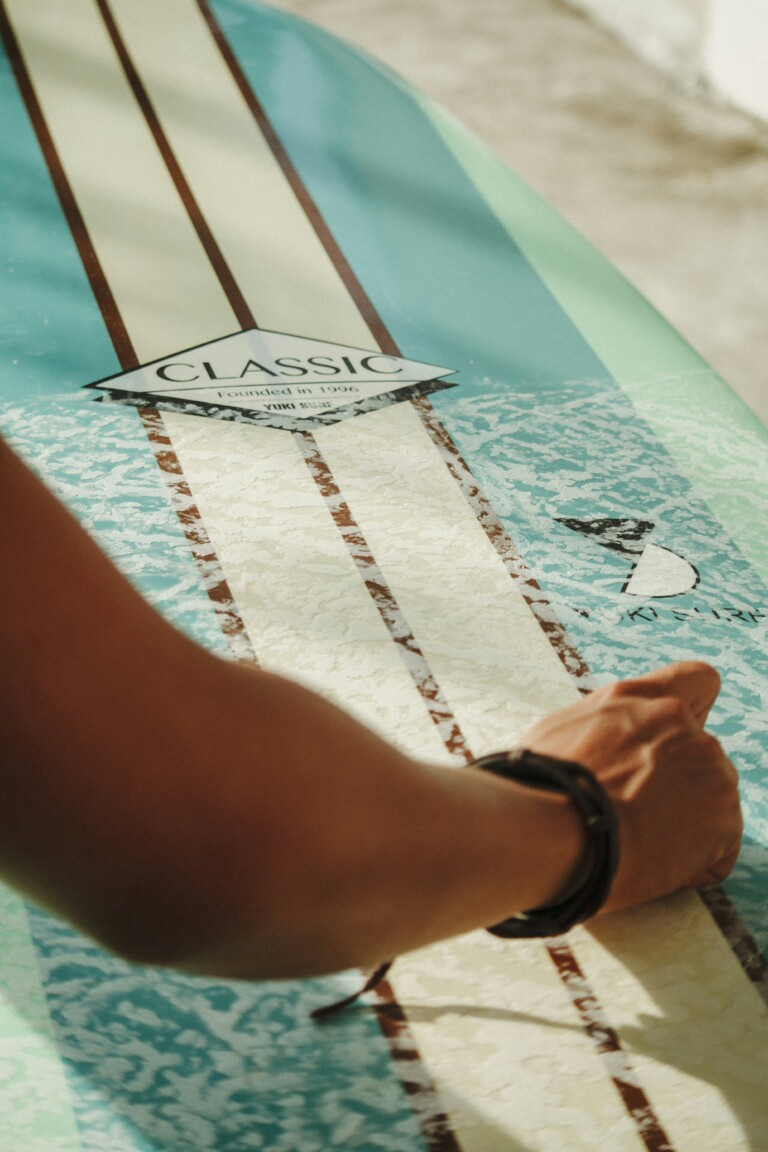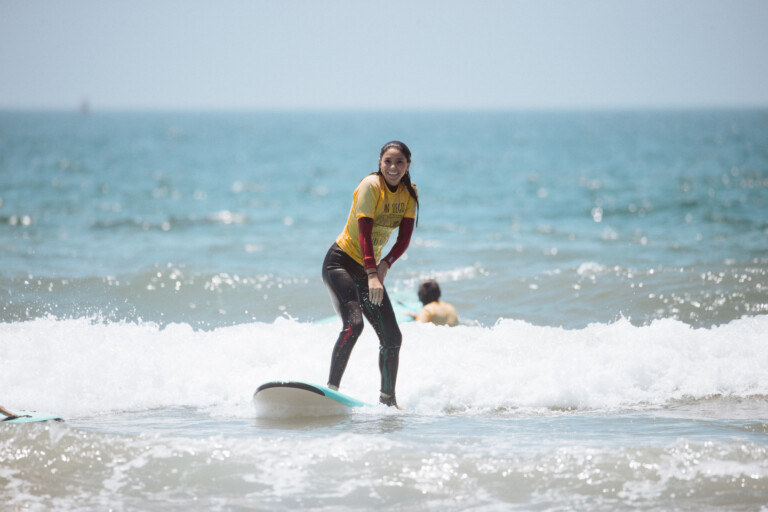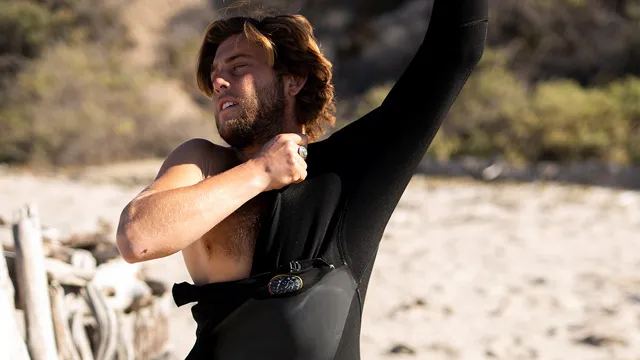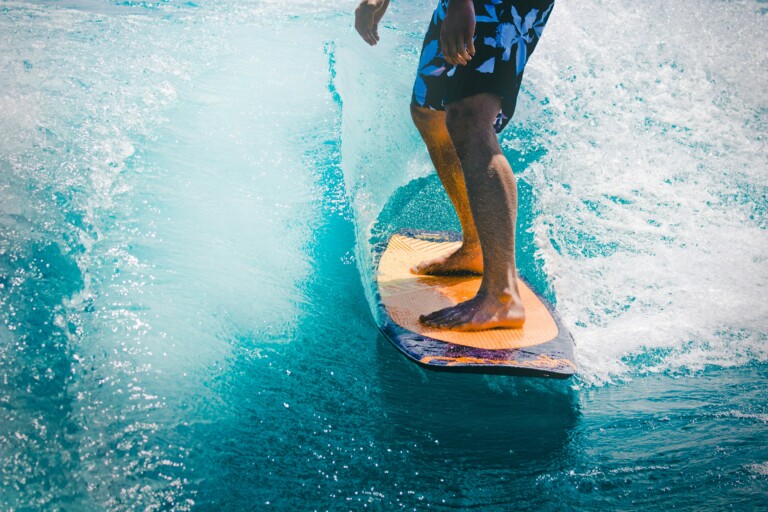When you’re out surfing, the leash is more than just a safety accessory—it’s a vital piece of gear that ensures you stay connected to your board after wiping out or paddling out. At San Diego Surf School, we emphasize the importance of understanding how to properly select and use the right leash for your board length. In this article, we’ll dive into why it’s essential to use the correct leash for your surfboard, what to consider when choosing one, and how it impacts your overall surfing experience. Whether you’re taking a surf lesson for the first time or you’re looking to learn to surf more effectively, understanding leash sizing can make a big difference.
Why It’s Crucial to Use the Correct Leash
The primary purpose of a surf leash is to prevent your board from getting away from you after you wipe out or when you’re paddling in the ocean. However, using the wrong leash for your board can be counterproductive, making it harder to manage your board, reducing safety, and even affecting your performance in the water. Use the correct leash for your board length to avoid unnecessary drag or too much slack, which could lead to frustration, injury, or damage to your board. The correct leash ensures that your board remains attached to you while you’re surfing, without creating any unnecessary hindrances.
Matching Leash Length to Board Size
One of the key factors when choosing a leash is ensuring that its length matches your board size. As a general rule of thumb, your leash should be around 1-2 feet longer than your board. For example, if you’re riding a 7’0″ longboard, you’ll need a leash that’s about 8’0″ in length. This allows for enough slack to keep your board within reach while minimizing the risk of the leash getting caught. When you use the correct leash, you’ll find it easier to recover your board after a fall and paddle with more efficiency.
The Impact of Board Type on Leash Selection
Different types of surfboards require different leashes. A shortboard typically requires a leash between 5’ and 6’, whereas a longboard may need a leash that’s closer to 9′ or 10′. If you’re taking a surf lesson at San Diego Surf School with a longboard, instructors will often recommend using a longer leash to match the size of the board. Shortboards, being more maneuverable, often call for a shorter leash to prevent excess drag in the water. By taking board type into account, you can ensure you have the right leash length and that you’re fully prepared to catch waves with ease.
The Benefits of Choosing the Right Leash Material
Leashes come in different materials, with polyurethane being the most common. However, the type of material you choose can also affect your surfing experience. A durable, high-quality leash will last longer, even with heavy use, and provide better safety in a wipeout scenario. When you use the correct leash made of strong, reliable material, you’ll experience less stretching and breaking. It’s important to choose a leash with a comfortable ankle cuff that fits snugly but doesn’t cause discomfort, especially during long sessions or when you’re learning to surf.
Avoiding Common Leash Mistakes
Many beginners make the mistake of using a leash that’s too short or too long for their board. Using the correct leash means avoiding excessive drag from a leash that’s too long or struggling to manage a leash that’s too short. Some surfers may even use a leash that’s too thin for their board, compromising safety. It’s also essential to check the leash’s strength and thickness regularly for wear and tear. At San Diego Surf School, we recommend checking your leash before each session to ensure it’s still in top shape for the water.
How Leash Size Affects Your Surfing Experience
The size of your leash not only affects safety but also your ability to learn to surf effectively. If you’re just starting out, having the right leash makes it easier to recover from falls and get back on your board more quickly. It also reduces the chances of frustration and fatigue, which can detract from your enjoyment. By taking the time to use the correct leash, you’ll ensure that you can focus on mastering techniques during your surf lessons instead of dealing with distractions caused by improper gear.
Conclusion: Maximize Your Surfing Performance with the Right Leash
In conclusion, whether you’re a beginner looking to learn to surf or a seasoned surfer refining your skills, using the correct leash is crucial for both safety and performance. By choosing the right leash length for your surfboard, paying attention to board type, and ensuring proper leash material, you’ll experience more enjoyable, hassle-free sessions. At San Diego Surf School, our instructors will guide you through the best practices to help you get the most out of your surfing experience—starting with the essential gear, like the correct leash.











